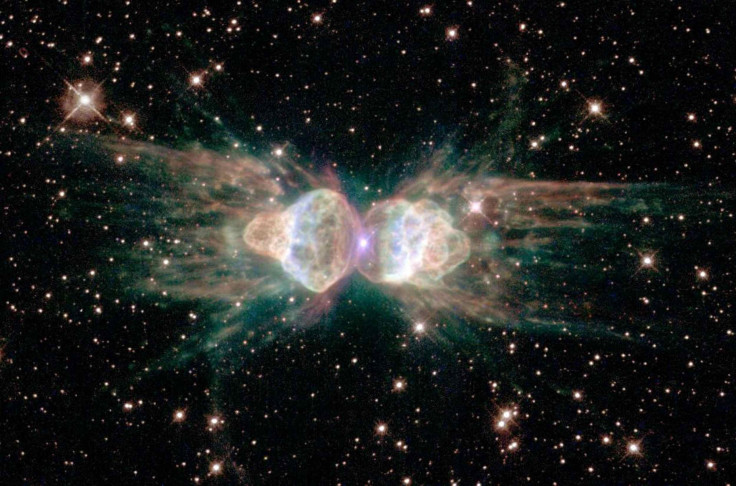Rare Infrared Laser Emission From Space Produced By Ant Nebula

There has been a lot of talk recently about the use of lasers in space for a variety of purposes, from clearing space debris to power transmission and communication, and even to power spacecraft that use lightsails. All these concepts are about sending lasers into space from Earth or from other human-built objects that are already in space. However, now we have encountered lasers from space that humans had nothing to do with, except, well, observe them.
No, this is not the work of aliens giving us hints of their existence. Instead, this natural phenomenon occurred in a well-known planetary nebula, Mz 3, which is more commonly known as the Ant Nebula, given its shape that resembles the common garden-variety ant. Located about 8,000 light-years away, the Ant Nebula was discovered in the 1920s by astronomer Donald Menzel (hence the name Mz 3, short for Menzel 3). The recent observation of infrared laser emissions from it suggests the presence of a double star system hidden at its center.
Planetary nebula like Mz 3 are formed when low- to middleweight stars, like our sun, turn into white dwarves near the end of their lives. Before that stage, they are red giants — which the sun will turn into in about 5 billion years — that shed their outer layers of gas and dust over time. The cast off gas and dust takes on fantastic and breathtaking shapes often, and these structures are called planetary nebula.
“When we observe Menzel 3, we see an amazingly intricate structure made up of ionized gas, but we cannot see the object in its centre producing this pattern,” Isabel Aleman, lead author of a paper describing the new results, said in a statement Wednesday. “Thanks to the sensitivity and wide wavelength range of the Herschel observatory, we detected a very rare type of emission called hydrogen recombination line laser emission, which provided a way to reveal the nebula’s structure and physical conditions."
Ant Nebula was observed in the infrared using the European Space Agency’s (ESA) Herschel space observatory, and its laser emissions are among the very few such known instances. To occur, it needs very dense gas in close proximity of the star, and observations showed the laser-emitting gas had density 10,000 times greater than that seen in the lobes of the Ant Nebula, and in other typical planetary nebulae.
This unusual density of gas gave scientists the clue to the presence of a companion to the white dwarf at the center of Ant Nebula. Usually, gas from the star is flung away and the immediate vicinity of the star — the distance between the sun and Saturn, in this case — is empty. Any lingering gas would fall back onto the star. The only way there could be dense gas around the star was if another star’s gravity was deflecting it in that direction and keeping it in a disc-shaped orbit around the white dwarf. The companion star, also dying, hasn’t yet been spotted, however.
“This study suggests that the distinctive Ant Nebula as we see it today was created by the complex nature of a binary star system, which influences the shape, chemical properties, and evolution in these final stages of a star’s life,” Göran Pilbratt, ESA’s Herschel project scientist, said in the statement.
The paper was published online Wednesday in the journal Monthly Notices of the Royal Astronomical Society, under the title “Herschel Planetary Nebula Survey (HerPlaNS): hydrogen recombination laser lines in Mz 3.”
© Copyright IBTimes 2024. All rights reserved.




















